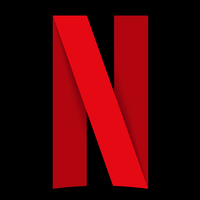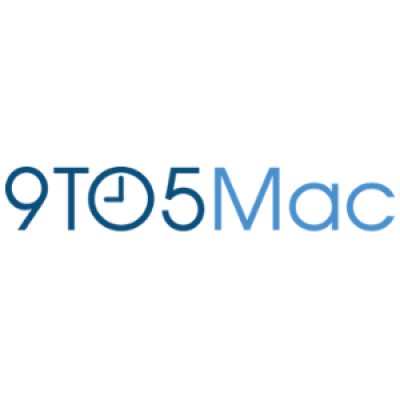Netflix Cuts Support for Older iPhones and iPads: What You Need to Know
September 15, 2024, 3:37 am
In a world where technology evolves at lightning speed, Netflix has decided to leave some older iPhones and iPads behind. The streaming giant will no longer support its app on devices that cannot upgrade to iOS 17 or newer. This change affects several popular models, including the iPhone 8, iPhone 8 Plus, iPhone X, and the first-generation iPad Pro.
Imagine being on a train that’s left the station, while your friends wave goodbye from the platform. That’s how users of these devices might feel as Netflix shifts gears. The company’s decision is a clear signal: adapt or be left in the dust.
The affected devices will still run the Netflix app for now. However, users can expect a gradual decline in functionality. Without updates, these devices will miss out on crucial bug fixes and security patches. It’s like sailing a ship without a compass—eventually, you’ll drift off course.
The iPad Pro, first introduced in 2015, was a game-changer. It brought a larger screen and a new level of productivity. Yet, like all good things, its time has come. The iPhone 8 and 8 Plus, released in 2017, were among the last to feature the classic home button. The iPhone X, which followed shortly after, marked a significant design shift. These devices have served their purpose well, but now they face obsolescence.
As technology marches forward, the iOS 18 update looms on the horizon. This new operating system promises exciting features, including Apple Intelligence, a tool that harnesses the power of artificial intelligence. But for those clinging to older devices, this is a distant dream. The iOS 18 update will roll out on September 16, 2024, leaving behind those who cannot upgrade.
Netflix’s decision is not entirely surprising. The company has been gradually phasing out support for older devices. Just this past summer, it stopped supporting the third-generation Apple TV. This trend reflects a broader industry shift. As software becomes more complex, older hardware struggles to keep up. It’s a classic case of survival of the fittest.
For users of the affected devices, the clock is ticking. They can still access Netflix through their current app or via a web browser. However, the experience may soon become less enjoyable. Imagine trying to watch a high-definition movie on a screen that can’t keep up. Frustration is inevitable.
The warning signs are already appearing. Users on iOS 16 have reported receiving messages urging them to upgrade. This is Netflix’s way of saying, “We’re moving on.” The writing is on the wall. Those who wish to continue enjoying Netflix will need to consider upgrading their devices.
The tech landscape is unforgiving. Each year, new models flood the market, pushing older ones into the shadows. This cycle is relentless. It’s a race where only the swiftest survive. For many, upgrading is not just a choice; it’s a necessity.
Apple has promised to provide security updates for iOS 17 even after the release of iOS 18. This is a small comfort for those who can’t upgrade. But it’s a temporary solution. Eventually, users will find themselves without support, navigating a sea of vulnerabilities.
The implications of this shift extend beyond Netflix. Other apps may follow suit, leaving users with outdated devices scrambling for alternatives. It’s a domino effect waiting to happen. As one app cuts support, others may soon follow. The message is clear: if you want to stay connected, you need to keep up.
In the grand scheme of things, this is a wake-up call. Technology is not static. It evolves, and so must we. For those clinging to older devices, it’s time to reassess. Are you ready to let go? Or will you hold on until the last moment, only to find yourself stranded?
The future is bright for those who adapt. New devices come with improved features, better performance, and enhanced security. They offer a seamless experience that older models simply cannot match. Investing in a new device is not just about keeping up with trends; it’s about ensuring a better experience.
As Netflix and other tech giants continue to innovate, users must be prepared to make tough choices. The days of holding onto outdated technology are numbered. Embrace the change. It’s the only way to stay in the game.
In conclusion, Netflix’s decision to cut support for older iPhones and iPads is a significant moment in the tech world. It highlights the relentless pace of innovation and the need for users to adapt. For those affected, the time to act is now. Upgrade, or risk being left behind in a rapidly changing landscape. The choice is yours.
Imagine being on a train that’s left the station, while your friends wave goodbye from the platform. That’s how users of these devices might feel as Netflix shifts gears. The company’s decision is a clear signal: adapt or be left in the dust.
The affected devices will still run the Netflix app for now. However, users can expect a gradual decline in functionality. Without updates, these devices will miss out on crucial bug fixes and security patches. It’s like sailing a ship without a compass—eventually, you’ll drift off course.
The iPad Pro, first introduced in 2015, was a game-changer. It brought a larger screen and a new level of productivity. Yet, like all good things, its time has come. The iPhone 8 and 8 Plus, released in 2017, were among the last to feature the classic home button. The iPhone X, which followed shortly after, marked a significant design shift. These devices have served their purpose well, but now they face obsolescence.
As technology marches forward, the iOS 18 update looms on the horizon. This new operating system promises exciting features, including Apple Intelligence, a tool that harnesses the power of artificial intelligence. But for those clinging to older devices, this is a distant dream. The iOS 18 update will roll out on September 16, 2024, leaving behind those who cannot upgrade.
Netflix’s decision is not entirely surprising. The company has been gradually phasing out support for older devices. Just this past summer, it stopped supporting the third-generation Apple TV. This trend reflects a broader industry shift. As software becomes more complex, older hardware struggles to keep up. It’s a classic case of survival of the fittest.
For users of the affected devices, the clock is ticking. They can still access Netflix through their current app or via a web browser. However, the experience may soon become less enjoyable. Imagine trying to watch a high-definition movie on a screen that can’t keep up. Frustration is inevitable.
The warning signs are already appearing. Users on iOS 16 have reported receiving messages urging them to upgrade. This is Netflix’s way of saying, “We’re moving on.” The writing is on the wall. Those who wish to continue enjoying Netflix will need to consider upgrading their devices.
The tech landscape is unforgiving. Each year, new models flood the market, pushing older ones into the shadows. This cycle is relentless. It’s a race where only the swiftest survive. For many, upgrading is not just a choice; it’s a necessity.
Apple has promised to provide security updates for iOS 17 even after the release of iOS 18. This is a small comfort for those who can’t upgrade. But it’s a temporary solution. Eventually, users will find themselves without support, navigating a sea of vulnerabilities.
The implications of this shift extend beyond Netflix. Other apps may follow suit, leaving users with outdated devices scrambling for alternatives. It’s a domino effect waiting to happen. As one app cuts support, others may soon follow. The message is clear: if you want to stay connected, you need to keep up.
In the grand scheme of things, this is a wake-up call. Technology is not static. It evolves, and so must we. For those clinging to older devices, it’s time to reassess. Are you ready to let go? Or will you hold on until the last moment, only to find yourself stranded?
The future is bright for those who adapt. New devices come with improved features, better performance, and enhanced security. They offer a seamless experience that older models simply cannot match. Investing in a new device is not just about keeping up with trends; it’s about ensuring a better experience.
As Netflix and other tech giants continue to innovate, users must be prepared to make tough choices. The days of holding onto outdated technology are numbered. Embrace the change. It’s the only way to stay in the game.
In conclusion, Netflix’s decision to cut support for older iPhones and iPads is a significant moment in the tech world. It highlights the relentless pace of innovation and the need for users to adapt. For those affected, the time to act is now. Upgrade, or risk being left behind in a rapidly changing landscape. The choice is yours.

